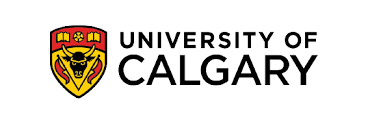UCalgary Veterinary Students Impact Lives of Rescued Animals
The University of Calgary Faculty of Veterinary Medicine (UCVM) recently concluded another successful round of student rotations at the Alberta Animal Rescue Crew Society (AARCS), where four dedicated veterinary students gained invaluable hands-on experience. This partnership, which combines academic learning with practical application, continues to benefit both the students and the animals in AARCS’s care.
Dr. Caroline Beninger, DVM’24, was one of the participating students this spring before graduating. She has always had a passion for veterinary medicine: “I have wanted to be a veterinarian for as long as I can remember. Over time, my reason to become a veterinarian was to help people help animals in need. I believe veterinary care is essential to the well-being of animals and the people that care for them.
“To this end, I have volunteered with the Canadian Animal Task Force and Veterinarians Without Borders. I am excited to continue volunteering with these organizations, and others like them, as I start my career as a veterinarian!”
A woman in a graduation cap with her dog
Caroline Beninger with her dog, Dr. Tazz Tazzerson, who was adopted from AARCS.
Caroline Beninger
Beninger chose the AARCS rotation because of her personal connection to the organization.
“AARCS is where I adopted my dog, Dr. Taz Tazzerson, from. They are an incredible organization that deserve all the help and support they can get,” she says. Her favorite part of the rotation was performing health checks on new intakes. “So many puppies and kittens to snuggle while doing physical exams!”
One of the standout cases for Beninger involved an unusual discovery during a routine ovariohysterectomy. “During one of my colleagues’ surgeries, we discovered an abnormal-appearing ovary. We submitted the uterus and ovaries to the UCVM diagnostic services unit and discovered it was an ovarioteste.
“This can occur due to abnormal development of the reproductive tract. I love when routine procedures have a twist! Fortunately, this finding will have no implications for the puppy, and she will enjoy a normal, happy life with her forever family.”
Dr Madeleine Browne
Madeleine Browne
Adrian Shellard
Dr. Madeleine Browne, DVM’24, another student on the rotation, also found her passion for veterinary medicine early on. “Ultimately, it was the diversity of career paths, the community, and the furry creatures we have the honour of helping each and every day that led me to pursue veterinary medicine,” she says.
She was drawn to the AARCS rotation partly due to her family’s connection to the organization. “My family dog was an AARCS rescue,” she says. “I also wanted to experience the realities of providing medicine and surgery with financial and space constraints.”
For Browne, the collaborative approach to medicine and surgery was the highlight of the rotation. “We cultivated tons of great case discussions and got to deep dive into topics that wouldn’t have been possible in the traditional classroom setting,” she says.
One memorable case involved a cat with neurological symptoms that had puzzled previous caregivers. “This was the perfect case for us to put our brains together and brainstorm,” she recalls. “We were able to lean on mentors and experts in the greater Calgary area, while performing our own neurological exam and treatment plan in clinic.”
AARCS, known for its diverse caseload and focus on population medicine, provides a unique learning environment for veterinary students. Amy Corpe, director of animal health at AARCS, emphasizes the importance of these rotations.
“In shelter medicine rotations, veterinary students forge a profound connection between their passion for healing and their call to serve the vulnerable,” she says. “These rotations immerse students in the dynamic intersection of medicine, compassion, and community.”
AARCS Safe Haven
AARCS Safe Haven — Alberta Animal Rescue Crew Society.
Courtesy AARCS
Students at AARCS gain experience with a wide range of cases, from infectious diseases to behavioural issues, and learn to manage health concerns on a larger scale. They also develop resource management skills, learning to provide quality care despite budgetary and staffing constraints.
“This experience fosters resourcefulness and adaptability, essential skills in any veterinary career,” Corpe says.
The partnership between UCVM and AARCS not only strengthens community ties but also prepares future veterinarians for the challenges they may face in various career paths. Students like Beninger and Browne leave with a deeper understanding of animal health at the population level, as well as the compassion and adaptability needed to make a difference in the lives of animals and their caregivers.
For the students, the rotation is more than just a learning experience; it’s a chance to make a real impact. “It’s about helping animals find their forever families,” Beninger reflects.
And for AARCS, the partnership brings fresh perspectives and dedicated hands to support their mission of rescuing and caring for animals in need.

